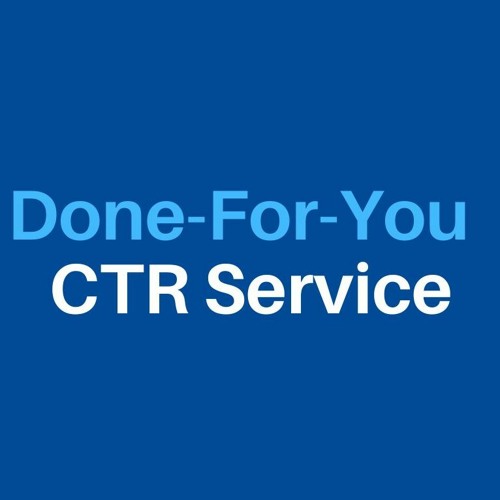Just How to Measure the Impact of CTR Control on Your Advertising
Recognizing the subtleties of click-through rate (CTR) manipulation in advertising is necessary for organizations pursuing real user involvement. By taking a look at key metrics such as conversion rates and bounce prices, marketing professionals can uncover potential discrepancies that might occur from artificial enhancements. Making use of tools like Google Analytics and applying A/B screening can supply insights into the efficiency of different approaches. The ramifications expand past instant data; the long-lasting impacts on brand honesty and customer trust fund warrant careful consideration. What remains to be explored is just how these components adjoin and influence total marketing success.
Recognizing CTR Control
Understanding CTR control is necessary for marketers looking for to enhance their projects and make sure information honesty. Click-through rate (CTR) refers to the proportion of customers that click on a particular link to the overall number of users who watch the ad or content.
The implications of CTR manipulation expand past plain data distortion; they can weaken count on electronic advertising and marketing. When services depend on filled with air metrics, they may purchase inefficient campaigns, inevitably hurting their roi. In addition, platforms may punish marketers involving in such techniques, bring about more ramifications for their marketing initiatives.
To effectively deal with CTR adjustment, online marketers should establish a thorough understanding of their information sources and analytics devices. By employing sophisticated monitoring methods and scrutinizing web traffic sources, they can guarantee and identify uneven patterns that their efficiency metrics show authentic customer interaction - LinkDaddy CTR Manipulation. This alertness is vital for fostering long-lasting success in a progressively competitive electronic landscape
Secret Metrics to Evaluate
Efficient evaluation of crucial metrics is essential for assessing the real performance of marketing projects and discovering prospective CTR manipulation. One primary statistics to think about is the Click-Through Rate (CTR) itself, which stands for the proportion of users who click on an advertisement to the total number of customers that watch it. An abrupt spike in CTR may show adjustment, demanding further investigation.
Furthermore, monitoring conversion prices is crucial. A high CTR with a reduced conversion price can signal that the clicks are not genuine or that the targeting is misaligned (LinkDaddy CTR Manipulation). Similarly, assessing bounce rates can supply insight into individual engagement; a high bounce rate after a click may recommend that the website traffic is not quality-driven.

Tools for Dimension

In addition, A/B screening devices such as Optimizely or VWO can assist in trial and error with numerous advertisement versions to figure out which components drive higher CTR. These devices permit marketers to analyze real-time performance and make data-driven changes. Social media analytics devices, like Hootsuite or Sprout Social, can likewise be instrumental in recognizing CTR within social platforms, providing insights right into audience habits and involvement fads.
Furthermore, warm mapping tools, such as Hotjar, can disclose exactly how customers communicate with ads, helping to recognize where improvements can be made. Incorporating these devices creates a durable dimension framework, making it possible for marketing professionals to discern the effects of CTR control properly. Eventually, the best choice of dimension devices is crucial for making notified advertising choices and maximizing project performance.

Reviewing Lasting Results
One have to take into consideration the long-term results of CTR adjustment on total advertising performance, as temporary gains can usually mask deeper ramifications. In time, artificially blew up click-through prices might result in decreased count on from customers and search engines alike. When customers consistently come across deceitful practices, they may come to be reluctant to involve with the brand name, resulting in reduced conversion prices in the future.
Furthermore, formula updates from platforms you can look here such as Google are made to prioritize genuine involvement over filled with air metrics. Subsequently, businesses that rely upon CTR control might find themselves penalized, bring about a decline in organic reach and presence. This can have a cascading impact on brand name trustworthiness and consumer commitment, ultimately undermining the really goals that the first manipulation looked for to achieve.
In addition, the information gathered from adjusted CTR might misinform online marketers in their strategy development. Counting on skewed information can lead to misdirected projects that fall short to resonate with the target market, causing lost resources and missed possibilities. Therefore, it is essential for marketing experts to assess the long-lasting ramifications of CTR manipulation and prioritize lasting, honest engagement strategies for lasting success.
Ethical Considerations in CTR Adjustment
In the world of electronic advertising and marketing, ethical considerations bordering CTR control are extremely important. While the desire to improve click-through rates (CTR) can lead to short-term gains, the possible lasting effects on brand name integrity and customer count on can not be ignored.
Moreover, moral worries expand to compliance with policies such as the Federal Profession Commission (FTC) standards, which mandate openness in advertising and marketing. Failing to abide by these criteria can subject services to lawful ramifications and harm their credibility. Online marketers should take into consideration the implications of their methods on customer experience and the more comprehensive sector landscape.
In addition, the surge of expert system and automation in advertising and marketing offers additional moral predicaments. The capacity for mathematical predisposition or the exploitation of customer data questions about responsibility and justness. Ultimately, moral marketing practices ought to prioritize transparency, sincerity, and regard for the customer, promoting lasting relationships that official statement go beyond simple metrics like CTR. Stabilizing efficiency with values is essential for sustainable success in the digital marketplace.
Verdict
In verdict, measuring the influence of CTR control on advertising and marketing calls for an extensive evaluation of crucial metrics, including click-through prices, conversion prices, and bounce rates. Ultimately, a data-driven method guarantees that marketing approaches are efficient and aligned with genuine customer interactions.
Understanding the subtleties of click-through rate (CTR) adjustment in marketing is important for services striving for authentic customer engagement.Effective evaluation of essential metrics is essential for assessing the real performance of marketing projects and identifying prospective CTR adjustment.One should think about the long-term effects of CTR control on overall advertising efficiency, as short-term gains can usually mask much deeper implications.In the world of digital marketing, honest factors to consider bordering CTR control are extremely important.In final thought, measuring the effect of CTR control on marketing requires a thorough evaluation of vital metrics, including click-through prices, conversion prices, and bounce prices.